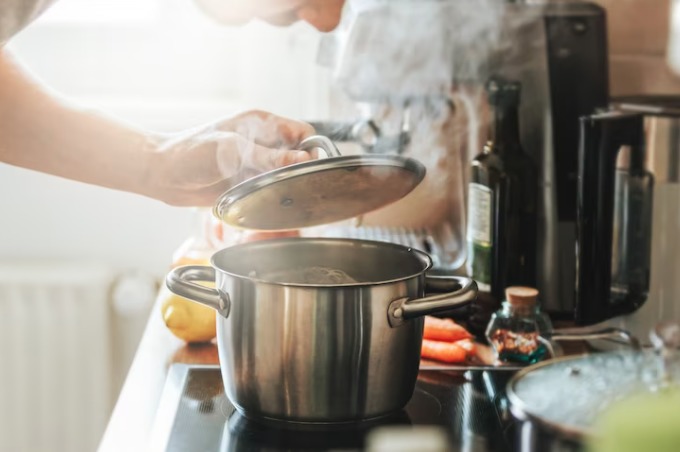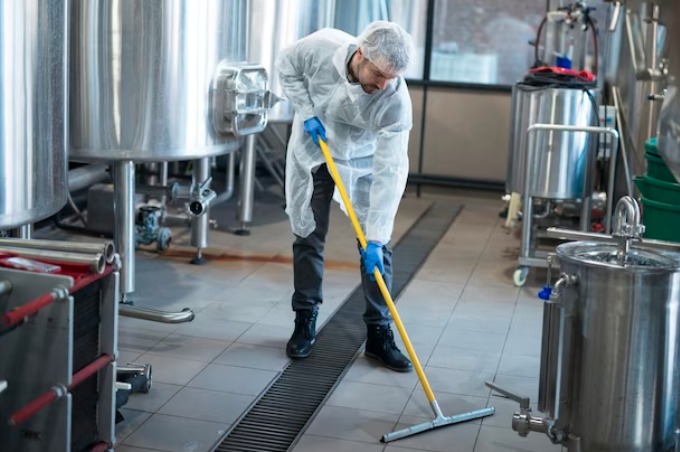Cross-contamination can arise when we least expect it and with anyone. In general, cross-contamination can happen both in industry and in our homes. We don’t have complete control over this, but we also don’t need to despair: we can avoid cross-contamination through good hygiene and storage practices, for example. In this content, we will cover everything you need to know to keep your diet risk-free; check out.
What is cross contamination
Cross-contamination is a very dangerous problem for people and can occur in the food industry and in home kitchens. Cross-contamination occurs when microorganisms or unwanted substances are transferred from one surface or food to another, leading to contamination and putting the health of those who consume it at risk.
It may seem simple, but cross-contamination is an issue that can have serious consequences and can happen to anyone who comes into contact with some of the substances we will talk about later. As we showed in a previous content, Food allergies: the cure formula is a mother’s love, when approaching the story of Talita Knupp, and her journey of discovering her daughter Tainá’s food allergy, cross-contamination was present in this process. Talita purchasing products that did not contain milk protein (her daughter’s sensitivity). Even though the label stated information, when consuming it, her daughter developed reactions due to the food having traces of the protein, that is, having gone through cross-contamination.
Stories like these make us create an alert about our diet and care practices to avoid damage to our health resulting from cross-contamination, both at an individual level in our homes, but also by demanding safety tests from the industry.
Types of food contaminants
Different types of contaminants can affect your dietary health. Find out what they are:
| Microorganisms | Food Allergens |
| Salmonella: Present in food contaminated with animal feces such as poultry, raw eggs, raw meat. It can cause food poisoning. | Gluten: Found in wheat, barley and rye. People with celiac disease or those with non-celiac sensitivity should avoid consumption. May cause damage to the small intestine. |
| E. Coli: Found in the intestines of animals and humans, can be transmitted through undercooked beef | Milk: Ingestion of milk or dairy products can cause allergic reactions such as hives, swelling, difficulty breathing and anaphylaxis in people allergic to the substances. |
| Listeria: Found in raw, undercooked foods and unpasteurized dairy products. Causes listeriosis in weakened immune systems | Eggs: The protein found in egg whites can lead to food allergies in sensitive people. |
| Nonovirus: Can cause acute gastroenteritis (nausea, vomiting, diarrhea and cramps) found in undercooked foods and raw shellfish. | Peanuts and Seafood: Can cause serious, sometimes life-threatening allergic reactions in sensitive people. Exposure to these allergens should be avoided. |
See also Food allergies: the cure formula is a mother’s love
Chemicals:
In addition to microorganisms and food allergens, food can also be contaminated with harmful chemicals such as pesticides, herbicides and heavy metals during the growing process, processing or due to improper storage. It is important to follow safe regulations and practices to minimize the presence of harmful chemicals in foods.
By taking appropriate precautions and being aware of different types of contaminants, you can help ensure safe food and protect your health and that of your family. Find out below how to avoid cross-contamination in your home and also during food manufacturing.
How can you avoid cross-contamination in the kitchen
With daily practices in our homes we can avoid cross-contamination, ensuring food safety and our overall health. Here are some measures you can take:
- Separate different foods: Preferably keep raw meats, poultry, seafood and fresh produce separate from other foods, especially those that will be eaten raw, such as fruits and salads.
- Clean utensils and surfaces: Sanitizing all kitchen utensils and washing your hands properly, as well as cleaning surfaces with hot water and soap before and after handling raw food is a simple practice that helps prevent cross-contamination.
- Proper Storage: In the case of raw foods, keep them separated in the refrigerator, using closed containers or suitable packaging to avoid contact between them.
Find out more What is the correct way to store natural products? Learn how to keep food fresh

Gluten cross-contamination: how to avoid it
People with celiac disease or non-celiac gluten sensitivity need to take extra precautions when it comes to cross-contamination. When coming into contact with gluten, these individuals can have serious consequences for their health. Check out some tips on how to avoid cross-contamination:
| Practices | Prefer | Avoid |
| Storage | Containers closed in a specific location | Open containers in contact with foods containing gluten |
| Utensils | Use specific utensils for cooking and store in separate places | Using utensils that have come into contact with gluten-containing foods |
| To cook | Prepare your food in a specific and separate place | Preparing your foods at the same time as preparing gluten-containing foods |
| Cleaning | Clean your utensils separately and do thorough cleaning if you are going to cook in the same place | Superficial cleaning of surfaces |
| Fried food | Use separate oils when frying | Use the same oil for frying |
Also check out Gluten Free: guide brings together the main questions about the gluten-free diet
Good manufacturing practices to avoid cross-contamination
Avoiding cross-contamination is everyone’s concern, but especially essential for the food industries. Good manufacturing practices (GMP) play a crucial role in avoiding these problems. Some important GMP measures include:
- Proper training: The BPF suggests providing regular training to employees on personal hygiene, correct food handling and prevention of cross-contamination.
- Cleaning and sanitation: establishing a regular cleaning program to ensure that facilities, equipment and utensils are adequately sanitized.
- Pest control: implement pest control measures such as sealing cracks, proper food storage, and correct waste disposal.
Measures like these contribute to food manufacturing that is not harmful to the public. Companies that are references in hygiene in the food production market, such as Tainá Alimentos, make this practice their own corporate culture. On a daily basis, various quality tests and tests are carried out in the gluten product handling rooms. The company also provides training on good hygiene practices and information about celiac disease.

If you work in food manufacturing, consider seeking training and studying even more about good food manufacturing and handling practices. Together we can build an even safer industry for consumers.

Sign up for our newsletter and stay up to date with exclusive news
that can transform your routine!
Warning: Undefined array key "title" in /home/storelat/public_html/wp-content/plugins/link-whisper-premium/templates/frontend/related-posts.php on line 12
Warning: Undefined array key "title_tag" in /home/storelat/public_html/wp-content/plugins/link-whisper-premium/templates/frontend/related-posts.php on line 13




